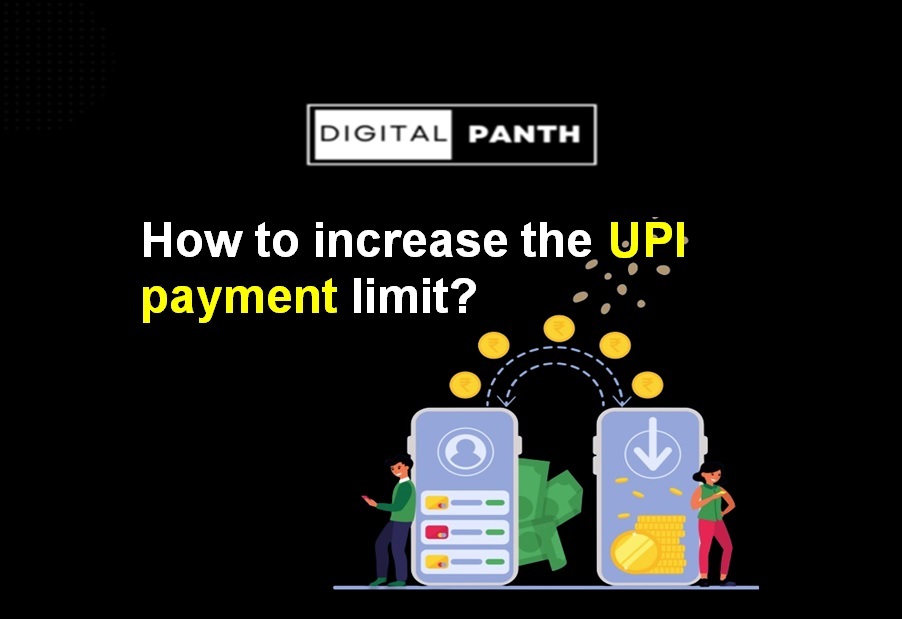In India, during the last decade, the digital payments system has developed tremendously. The introduction of UPI is a big factor in this development. It has provided a number of advantages as compared to conventional payment options. Many customers now prefer this quick and easy way of transaction because it has a user-friendly interface. Its transaction rates are very nominal. Moreover, it has a very high level of security. With its continued expansion and development, UPI has a big impact on Indian digital payments, which is expected to help India going forward.
What is UPI (Unified Payments Interface)?
In India, the Unified Payments Interface (UPI) of digital payment systems has become a game-changer. It has brought a fantastic change in people’s transaction activities as it is helping to create a cashless society. This payment system is supported by the government and because of this reason, UPI has been helping in advancing digital literacy and in financial inclusion. The UPI is encouraging India to transform into a digitally strong country. UPI has played a crucial role in the context of Digital India which is outstanding. It has a big influence on a number of industries.
The Unified Payments Interface (UPI) was created by the National Payment Corporation of India (NPCI). This system offers the ability to instantaneously transfer money between two bank accounts on a mobile platform, thereby facilitating interbank transactions. Offering a smooth and convenient payment system has completely changed the method of transactions which we adopt. There are many benefits to utilising UPI; that’s why it has evolved into a widely used payment option.
How to Transfer Money From a PhonePe Wallet to Bank Account?
Also Read: https://www.digitalpanth.com/how-to-transfer-money-from-phonepe-wallet-to-bank-account/
How to Transfer Amazon Pay Balance to Your Bank Account?
Reasons to put a limit.
UPI transaction limitations are implemented for several reasons. One of the main reasons to put a limit on UPI transactions is to keep a vigil against fraud. UPI contributes to lessening the risk of fraud by putting a daily limit on money transactions. Liquidity management is another reason for UPI transaction restrictions. UPI transaction limit contributes to ensuring that banks have sufficient liquidity to meet client requirements. While making payments, the clients must inform the Bank about their UPI transaction limits which helps the banks to control the frauds in UPI transactions.
What is the limit on UPI payments?
The daily UPI transaction limit is fixed by the Bank as well as by the customer. It determines how much and how often transactions can be made with it. The UPI daily transaction limit means the maximum amount of money that is received or sent through a UPI transaction in one day. The NPCI has fixed a daily limit of ₹1 lakh for UPI transactions, but this can differ from one Bank to another bank. Some of the banks also put weekly or monthly limits on UPI transactions. You can transfer the maximum amount of money in a day, which is the daily limit for UPI transactions. You should know the basic features of UPI transaction limits.
- NCPI has fixed a daily limit of ₹ 1 lakh for regular UPI transactions.
- The corporation has also fixed a daily limit of ₹ 10,000 on UPI withdrawals from ATMs using UPI apps.
- The maximum number of transactions you can make by using bank UPI apps is 20 in a day.
- But there is a limit of only ten transactions in a day that has been allowed by the third-party UPI apps.
- The NPCI has permitted only a maximum amount of ₹ 1 lakh for UPI transactions in a day.
- If you want to make a transaction for the capital market, collections, insurance, or foreign inward remittances, there is a limit of ₹ 2 lakh on UPI transactions.
- The limit of UPI transactions has been increased up to ₹ 5 lakh for making payments for health issues or educational purposes.
Reasons to increase the UPI payment limit.
There is a ₹ 1 lakh cap per P2P transaction using UPI according to NPCI (National Payment Corporation of India) guidelines, but your bank might not let it. All the banks have the right to fix a limit on transactions for their customers, which should be under ₹ 1lakh. Each bank has its own UPI transaction limit. But if your requirement is not fulfilled with that limit, you can request your bank to increase the transaction limit, but it must be below ₹1 lakh.
How to increase the UPI payment limit?
According to RBI guidelines, there is a limit of ₹1 lac for the UPI payment in one day. The banks are free to determine their own UPI transaction limit. Most of the UPI payment apps, such as PayTm, PhonePe, and Google Pay, also have their transaction limit. However, these UPI apps must follow the transaction limit imposed by the NPCI, which is ₹1 lakh. While calculating the limited amount of money for transfer through UPI, you should consider two things- one is the transaction limit of the linked Bank account with your UPI app and the transaction limit imposed by the app itself which you’re using.
It all depends upon your bank’s limit for transactions and your limit to make transactions in one day. The amount of payment and number of transaction times are mostly fixed by the bank, which cannot exceed ₹1 lakh in a day.
The UPI limit, which the Bank has fixed under ₹1 lakh, can be changed for some valid reasons by following the steps given below:
- First of all, you should open the online banking app and log in by using your credentials.
- After opening the app, you should select the option of “UPI Transfer” from the top menu which you will find in the app.
- When you go to the “UPI transfer” option, you will find a new tab, “Set UPI Transaction Limit.” Click on this option and click here.
- Now, you will be asked to enter your online banking password to proceed to the next step.
- Then, there will be opened a new page which will show your current UPI transaction limit.
- There is a daily transaction limit of ₹ 1,00,000 for making payments through UPI, which NPCI has fixed. It is the maximum limit, and it cannot be raised. But if your bank has a lower limit for transactions or you have already reduced your limit to handle your money more conveniently, in that case you can request to increase your payment limit. If you have reduced the limit and you want to improve your limit to ₹1 lakh, you can do it.
- Here, you will see an option: “Enter new UPI transaction limit.” Enter an amount of your requirement, which should be under ₹.1,000,000.
- Then you should enter the same amount again in the box below the above one and click “Submit.”
- On this new page, confirm your new UPI limit. Click “Confirm” to increase your transaction limit. Now you can use your money more conveniently.
- In the last step, you will receive an OTP on your registered cell phone number. Enter the same in the provided field. You will successfully create a new UPI transaction limit.
Final words.
India’s digitalization has brought a revolution in the online payment culture in our country. With the use of UPI, people took it as a very easy and convenient mode of payment. The use of UPI made paying friends, businesses, and retailers much more convenient. No account number or other financial information is needed to be entered for the recipient. While using UPI, the payment can be sent straight to their bank account by just entering their mobile number or UPI ID. However, additional risks undoubtedly prevail in the use of UPI. This UPI limit is very essential to avoid or check the fraud. UPI constraints are thus placed on the facility in order to prevent any financial damage brought on by unauthorised payments or fraudulent access to the UPI app.
FAQs.
Yes, there is a daily transaction limit, which NPCI has fixed. The daily transaction limit is ₹1 lakh for UPI. The limit of daily transactions through UPI depends upon banks, which is from ₹ 25000 to ₹ 1 lakh.
Normally, you are allowed to do up to 20 UPI transactions in 24 hours, according to NPCI regulations. However, it is crucial to remember that certain transaction restrictions could differ between banks.



Leave feedback about this